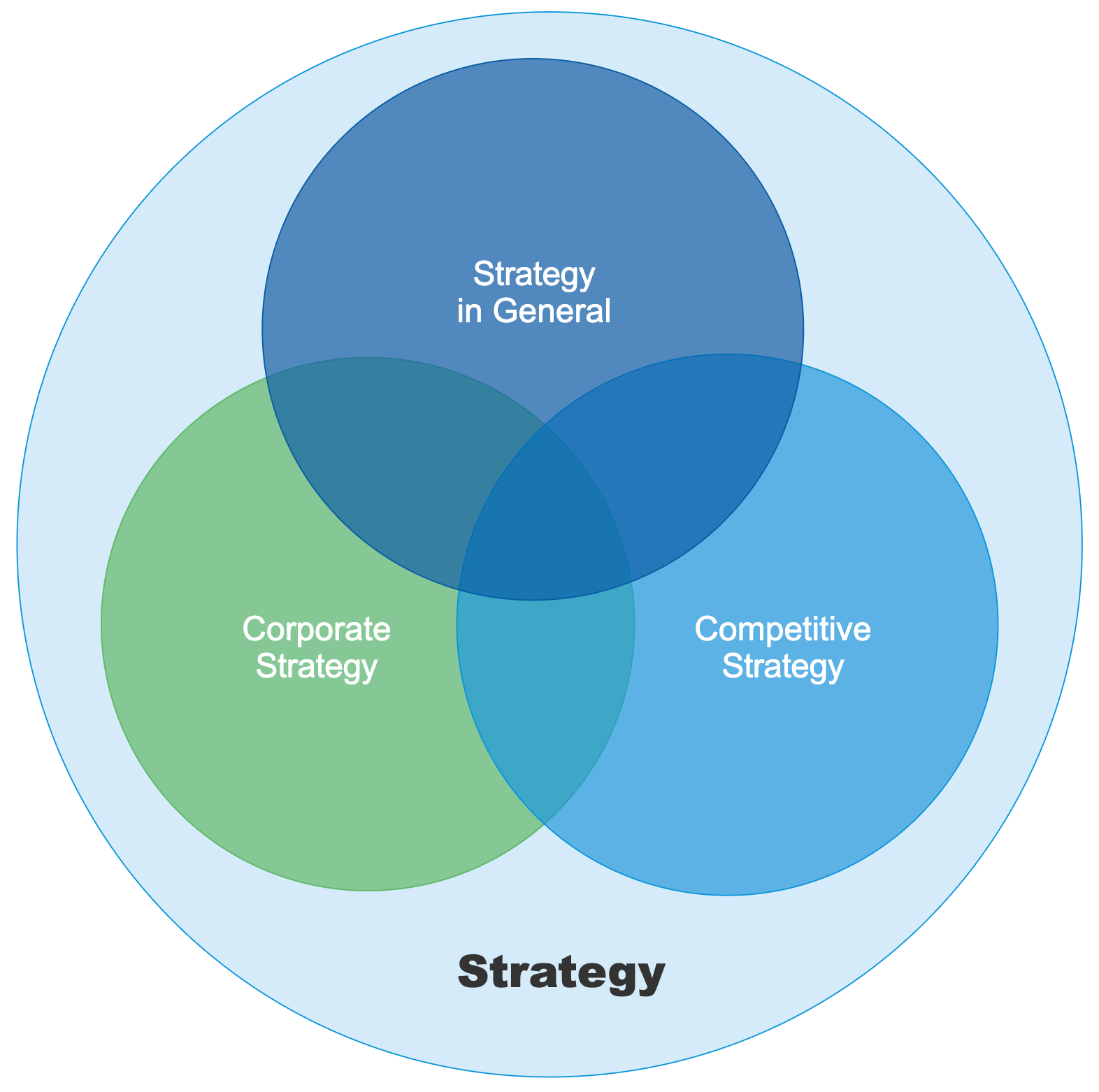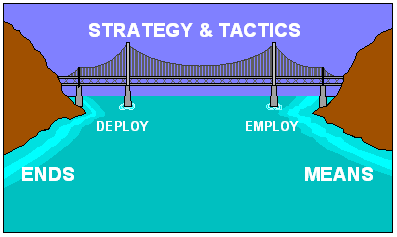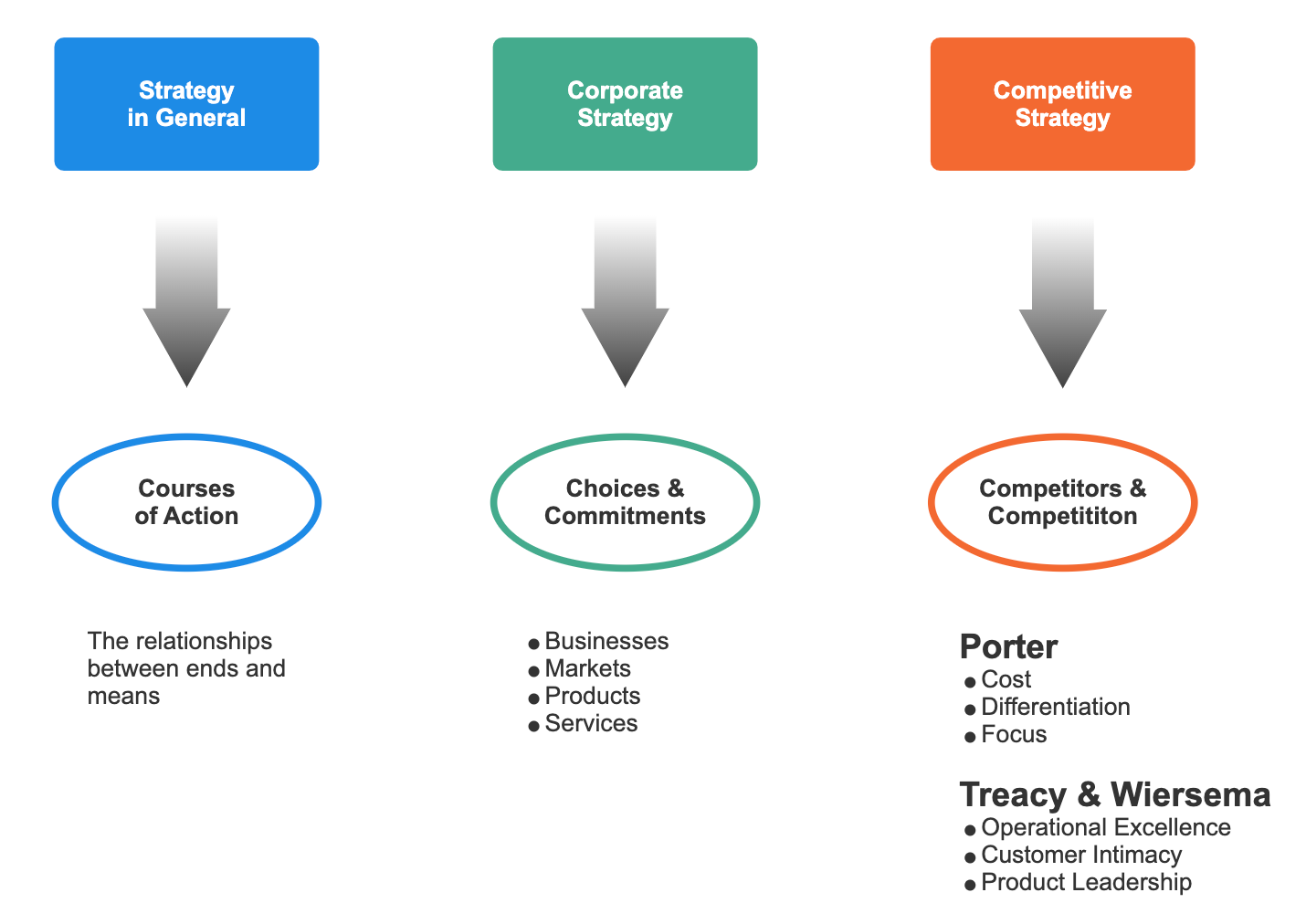Three Kinds of Business Strategy
Written by Fred Nickols
There are at least three basic kinds of strategy with which people must concern themselves in the world of business: (1) just plain strategy or strategy in general, (2) corporate strategy, and (3) competitive strategy. The purposes of this article are to clarify the differences between and among these three kinds of strategy and to provide some questions useful in thinking about all three.

Strategy, in general, refers to how a given objective will be achieved. Consequently, strategy in general is concerned with the relationships between ends and means, between the results we seek and the resources at our disposal. Strategy and tactics are both concerned with conceiving and then carrying out courses of action intended to attain particular objectives. For the most part, strategy is concerned with how you deploy or allocate the resources at your disposal whereas tactics is concerned with how you employ or make use of them. Together, strategy and tactics bridge the gap between ends and means.
Strategy and tactics are terms that come to us from the military. Their use in business and other civilian enterprises has required little adaptation as far as strategy in general is concerned. However, corporate strategy and competitive strategy do represent significant departures from the military meaning of strategy.

Corporate strategy defines the markets and the businesses in which a company will operate. Competitive or business strategy defines for a given business the basis on which it will compete. Corporate strategy is typically decided in the context of defining the company's mission and vision, that is, saying what the company does, why it exists, and what it is intended to become. Competitive strategy hinges on a company's capabilities, strengths, and weaknesses in relation to market characteristics and the corresponding capabilities, strengths, and weaknesses of its competitors.
According to Michael Porter, a Harvard Business School professor and the reigning guru of competitive strategy, competition within an industry is driven by five basic factors:
- Threat of new entrants.
- Threat of substitute products or services.
- Bargaining power of suppliers.
- Bargaining power of buyers.
- Rivalry among existing firms.
Porter also indicates that, in response to these five factors, competitive strategy can take one of three generic forms: (1) focus, (2) differentiation, and (3) cost leadership.
Writers on the subject of strategy point to several factors that can serve as the basis for formulating corporate and competitive strategy. These include:
- Products-services offered
- Natural resources
- Sales-marketing methods
- Production capacity-capability
- Users-customers served
- Size/growth goals
- Distribution methods
- Technology
- Market types and needs
- Return/profit goals
Michael Treacy and Fred Wiersema suggest that "value disciplines" should serve as the basis for settling on strategy (corporate or competitive). The three basic "value disciplines" they present are:
- Operational Excellence
Strategy is predicated on the production and delivery of products and services. The objective is to lead the industry in terms of price and convenience.
- Customer Intimacy
Strategy is predicated on tailoring and shaping products and services to fit an increasingly fine definition of the customer. The objective is long-term customer loyalty and long-term customer profitability.
- Product Leadership Generation
Strategy is predicated on producing a continuous stream of state-of-the-art products and services. The objective is the quick commercialization of new ideas.
Regardless of the definition of strategy, or the many factors affecting the choice of corporate or competitive strategy, there are some fundamental questions to be asked and answered. These include the following:
Related to Mission & Vision
- Who are we?
- What do we do?
- Why are we here?
- What kind of company are we?
- What kind of company do we want to become?
- What kind of company must we become?
Related to Strategy in General
- What is our objective? What are the ends we seek?
- What is our current strategy, implicit or explicit?
- What courses of action might lead to the ends we seek?
- What are the means at our disposal?
- How are our actions restrained and constrained by the means at our disposal?
- What risks are involved and which ones are serious enough that we should plan for them?
Related to Corporate Strategy
- What is the current strategy, implicit or explicit?
- What assumptions have to hold for the current strategy to be viable?
- What is happening in the larger, social, political, technical and financial environments?
- What are our growth, size, and profitability goals?
- In which markets will we compete?
- In which businesses?
- In which geographic areas?
Related to Competitive Strategy
- What is the current strategy, implicit or explicit?
- What assumptions have to hold for the current strategy to be viable?
- What is happening in the industry, with our competitors, and in general?
- What are our growth, size, and profitability goals?
- What products and services will we offer?
- To what customers or users?
- How will the selling/buying decisions be made?
- How will we distribute our products and services?
- What technologies will we employ?
- What capabilities and capacities will we require?
- Which ones are core?
- What will we make, what will we buy, and what will we acquire through alliance?
- What are our options?
- On what basis will we compete?
The preceding discussion asserts that strategy in general is concerned with how particular objectives are achieved, with courses of action. Corporate strategy is concerned with choices and commitments regarding markets, business and the very nature of the company itself. Competitive strategy is concerned with competitors and the basis of competition.

About the Author: My name is Fred Nickols. I am a writer, an independent consultant and a former executive. Visual aids of one kind or another have played a central role in my work for many years. My goals in writing for SmartDraw's Working Smarter blog are to: (1) provide you with some first-rate content you can't get anywhere else, (2) illustrate how important good visuals can be in communicating such content and (3) illustrate also the critical role visuals can play in solving the kinds of problems we encounter in the workplace.